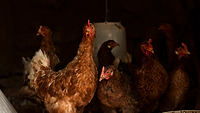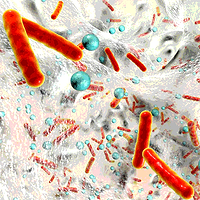Using Sunlight to Control Foodborne Pathogens in Agriculture

Credit: Jake Gard (jakke) via Unsplash
Researchers at the University of Georgia’s College of Agricultural and Environmental Sciences (UGA’s CAES) are using precision agriculture to create a sunlight-based method for controlling microbial contaminants in irrigation water used for food crops. After enough research is conducted, the UGA team hopes to create an app that will help growers enhance food safety.
UGA CAES Professor Govindaraj Dev Kumar, Ph.D., who previously worked on studies on the antimicrobial potential of light, is the lead researcher on a study that aims to determine sunlight’s ability to affect the survival of certain bacteria in water. Specifically, the UGA research team will explore the ideal sunlight conditions for reducing significant foodborne pathogens Salmonella and Escherichia coli.
According to Dr. Kumar, sunlight affects microorganisms that are present in the environment, including foodborne pathogens capable of causing human illnesses. Sunlight can be used as a cost-effective and environmentally responsible way of reducing bacterial counts in agricultural water, given that high levels of light affect bacteria. Determining how to leverage sunlight as an antimicrobial tool could help industry to mitigate the contamination of leafy greens and vegetables by pathogens found in irrigation water.
The UGA team researched how factors such as sunlight, water temperature, and ultraviolet (UV) radiation levels affect Salmonella and E. coli by conducting experiments in real-world conditions with bacteria in the field.
After collecting data, the researchers performed a correlation analysis using artificial neural network modeling to predict the most likely outcomes of various scenarios. The model determined that bacterial populations, when exposed to sunlight, decline more in cooler water than in warmer water. The observation could help scientists understand why bacterial counts tend to be higher in water during the summer months.
Dr. Kumar theorizes that free radicals are more stable in cold water than warm water. In the winter, the sunlight causes the accumulation of more reactive oxygen species (ROS) in the water, but in the summer, there is less ROS in the water. Therefore, sunlight in the winter months might be more antimicrobial than sunlight in the summer months, and that could be why bacteria levels are higher in water during the summer.
The end goal of the research is to create an app that will allow farmers to determine when water supplies will contain the least bacteria. The UGA research team’s next step is to conduct more research across the U.S. to explore regional differences.Looking for a reprint of this article?
From high-res PDFs to custom plaques, order your copy today!





